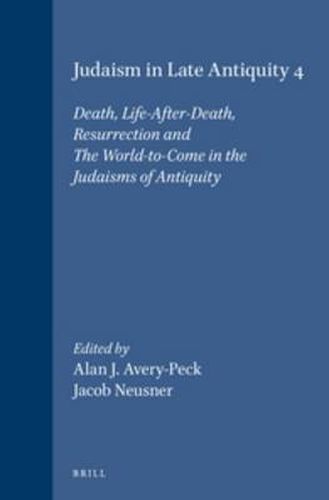Readings Newsletter
Become a Readings Member to make your shopping experience even easier.
Sign in or sign up for free!
You’re not far away from qualifying for FREE standard shipping within Australia
You’ve qualified for FREE standard shipping within Australia
The cart is loading…






Thirteen scholars describe the views of death, life after death, resurrection, and the world-to-come set forth in the literary evidence for late antique Judaism. The volume covers the view of Scripture as a whole as against other Israelite writings; distinct parts of Scripture such as Psalms and the Wisdom literature; apocalyptic and the non-apocalyptic pseudepigraphic literature, Philo; Josephus; the Dead Sea Scrolls; earliest Christianity (the Gospels in particular); the Rabbinic sources; the Palestinian Targums to the Pentateuch; and, out of material culture, the inscriptional evidence. The result is both to highlight the range of available perspectives on this important issue and to illuminate a central problem in the study of Judaism in late antiquity, phrased as One Judaism or many? Here is displayed indicative components of Judaism in their full diversity, leaving readers to determine whether the notion of a single, coherent religion falls under the weight of a mass of documentary contradictions or whether an inner harmony shines forth from a repertoire of only superficially-diverse data.
$9.00 standard shipping within Australia
FREE standard shipping within Australia for orders over $100.00
Express & International shipping calculated at checkout
Thirteen scholars describe the views of death, life after death, resurrection, and the world-to-come set forth in the literary evidence for late antique Judaism. The volume covers the view of Scripture as a whole as against other Israelite writings; distinct parts of Scripture such as Psalms and the Wisdom literature; apocalyptic and the non-apocalyptic pseudepigraphic literature, Philo; Josephus; the Dead Sea Scrolls; earliest Christianity (the Gospels in particular); the Rabbinic sources; the Palestinian Targums to the Pentateuch; and, out of material culture, the inscriptional evidence. The result is both to highlight the range of available perspectives on this important issue and to illuminate a central problem in the study of Judaism in late antiquity, phrased as One Judaism or many? Here is displayed indicative components of Judaism in their full diversity, leaving readers to determine whether the notion of a single, coherent religion falls under the weight of a mass of documentary contradictions or whether an inner harmony shines forth from a repertoire of only superficially-diverse data.